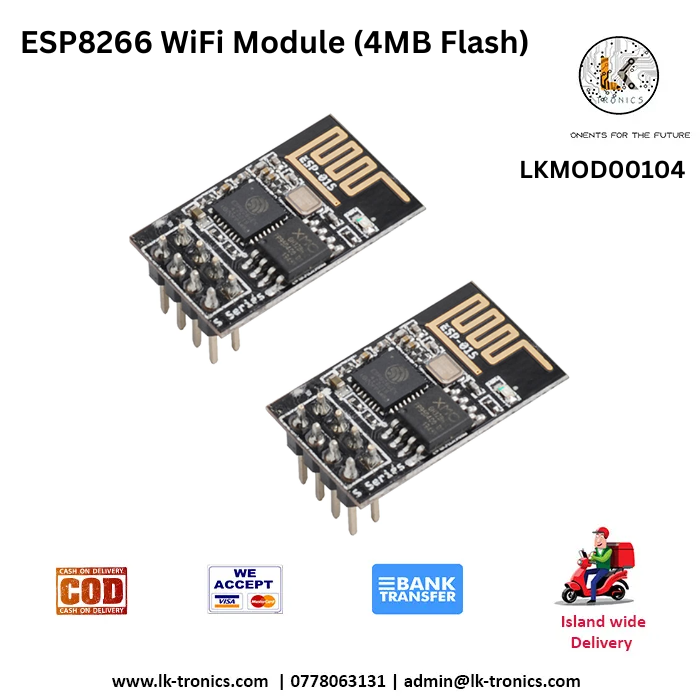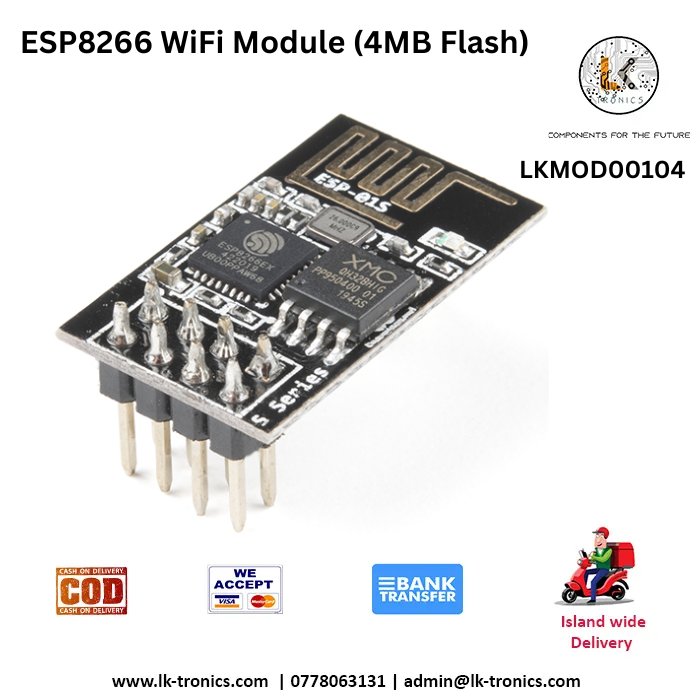ESP8266 WiFi Module (4MB Flash)
The ESP8266 is a popular Wi-Fi module designed for IoT (Internet of Things) applications. The 4MB Flash version is commonly used due to its balance between memory size.
Specifications:
- Chip: ESP8266
- Flash Memory: 4MB (32 Mbit)
- RAM: 160KB (of which 80KB is available for user applications)
- Processor: Tensilica L106 32-bit RISC microprocessor
- Clock Speed: 80 MHz (up to 160 MHz with overclocking)
- Wi-Fi Standards: 802.11 b/g/n
- Wi-Fi Range: Up to 100 meters (328 feet) in open space; range may vary depending on environmental conditions
- Antenna: Onboard PCB antenna or external antenna (depending on module variant)
- Operating Voltage: 3.0V to 3.6V (typically 3.3V)
- Current Consumption:
- Active Mode: ~70-150 mA (varies with Wi-Fi activity)
- Deep Sleep Mode: <10 µA
- GPIO Pins: 17 GPIOs (some pins have multiple functions and not all are available for general use)
- Communication Interfaces:
- UART: For serial communication (TX/RX)
- SPI: For interfacing with other peripherals
- I2C: For connecting I2C devices (typically requires software implementation)
- PWM: Pulse-width modulation
- ADC: 10-bit ADC for analog input
- Programming Interface: UART (for flashing firmware)
- Development Platforms: Compatible with Arduino IDE, PlatformIO, and other development environments
- Software Support:
- Firmware: AT commands firmware or custom firmware (e.g., ESP8266 SDK, Arduino core for ESP8266)
- Libraries: Various libraries available for different development environments
Typical Modules and Development Boards:
- ESP-01: Basic module with minimal GPIOs and a small footprint.
- NodeMCU: Development board with USB interface and additional components for easy prototyping.
- Wemos D1 Mini: Compact development board with a built-in USB interface and additional features.

VISIT OUR FACEBOOK PAGE FOR MORE INFO | MORE PRODUCT IN OUR SHOP
Based on 0 reviews
Be the first to review “ESP8266 WiFi Module (4MB Flash)”
You must be logged in to post a review.













There are no reviews yet.